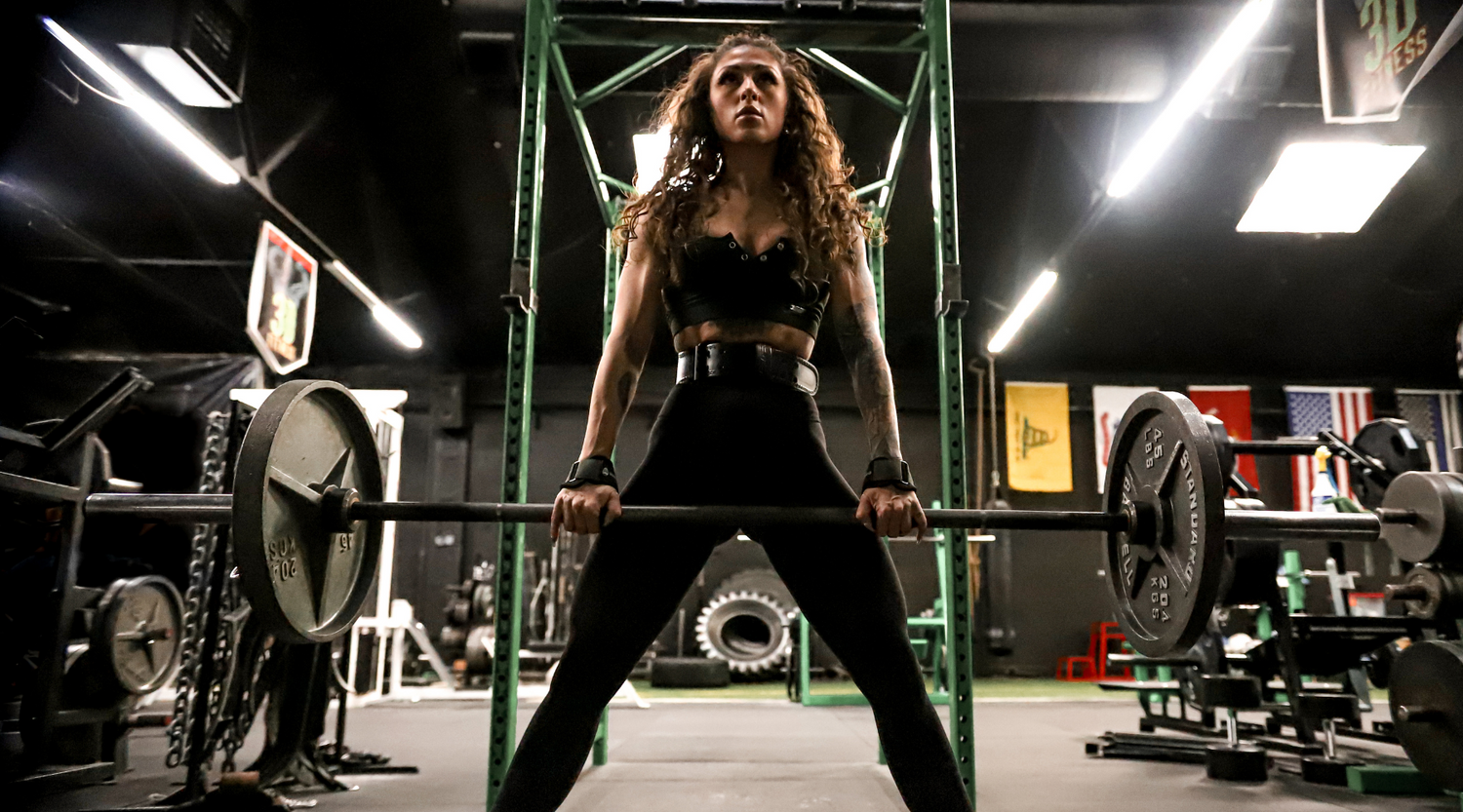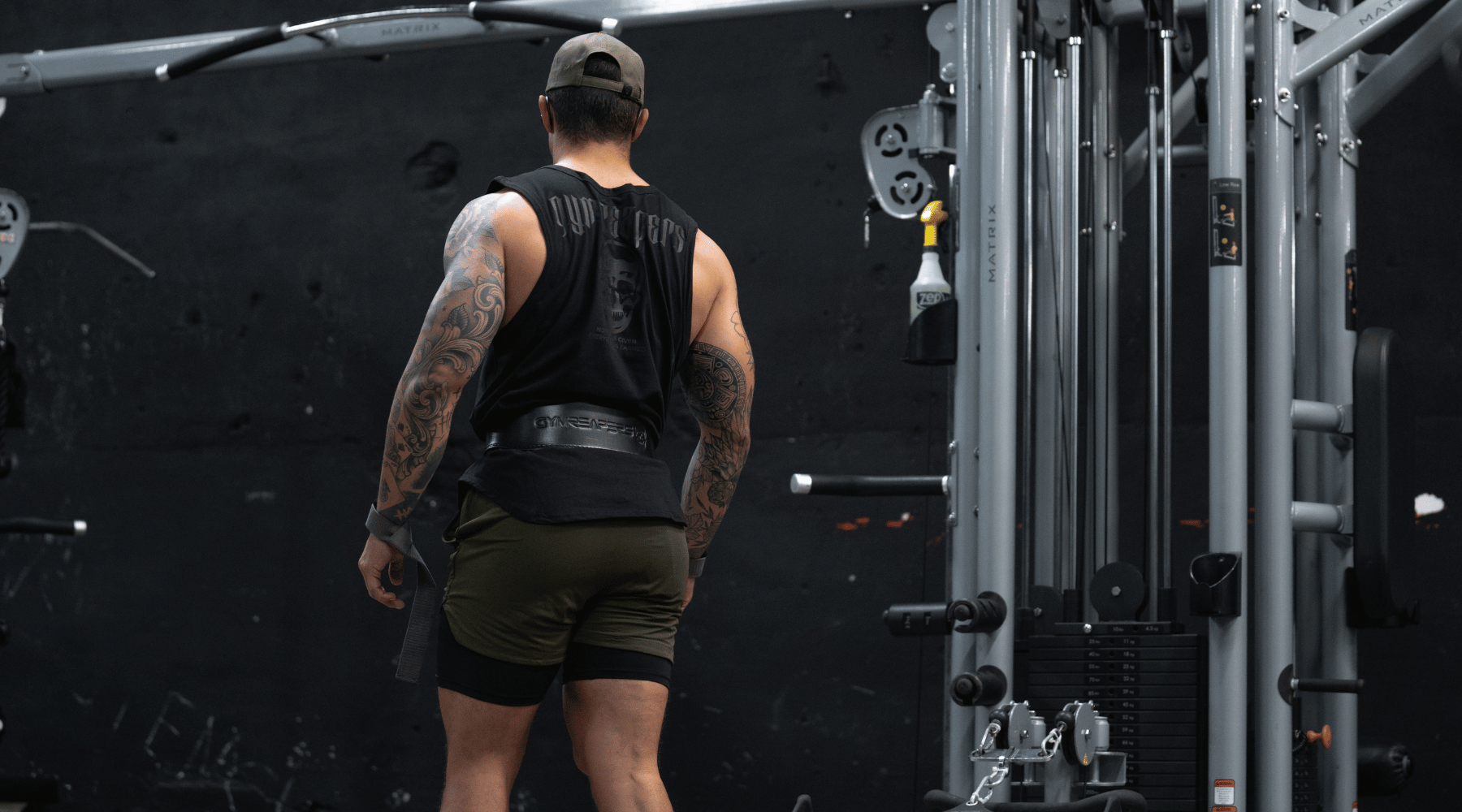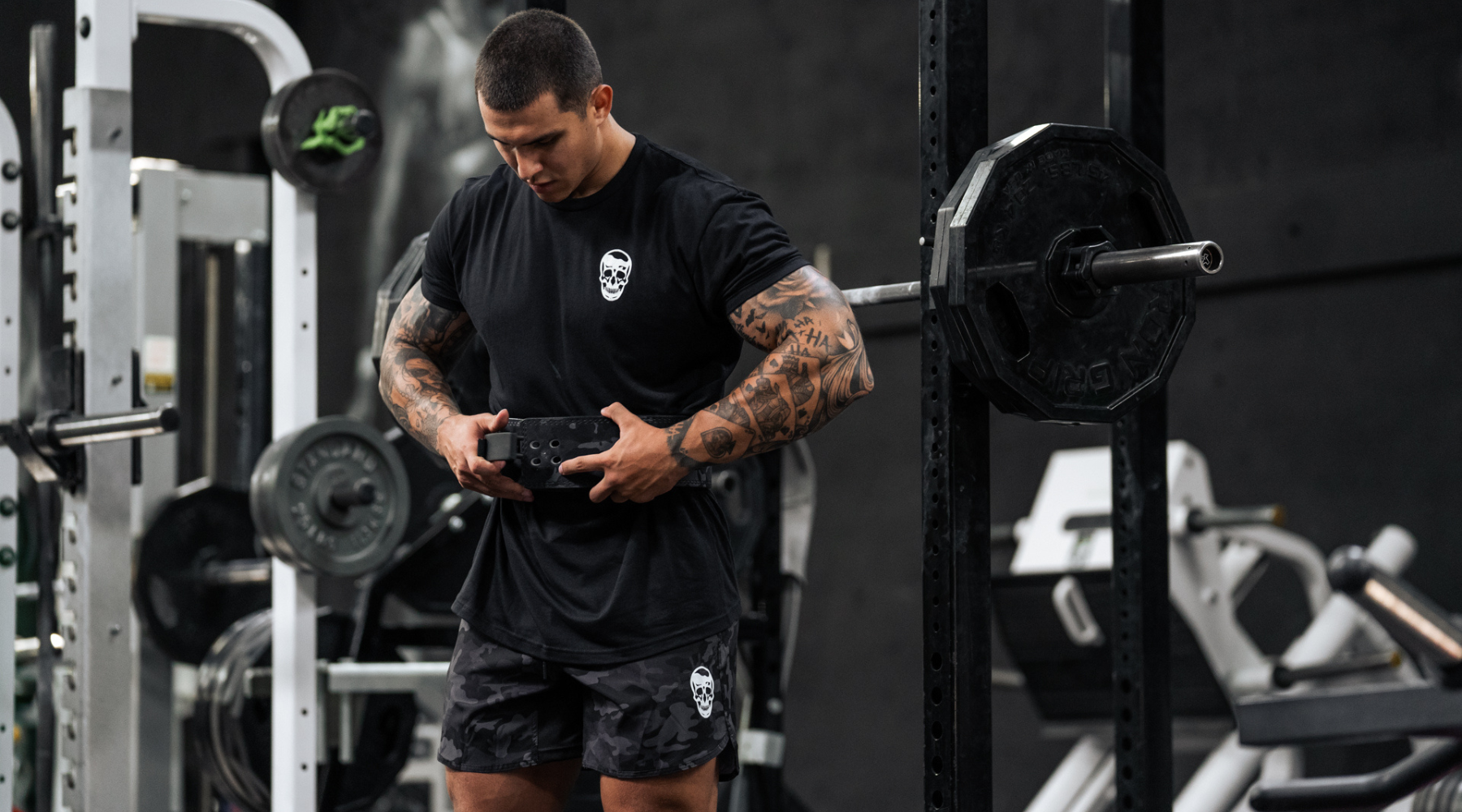Some people are concerned that wearing a tight lifting belt while exercising may lead to negative consequences. This is, in fact, true, if the belt is not worn properly.
With that said, lifting belts are safe if you wear the proper size and fasten it correctly in the right position. When used properly, research shows that lifting belts can help you generate more force and bar speed, which can translate into heavier loads and higher maxes.
Below, I’m going to discuss some of the potential issues that might arise if you haven’t sized your belt properly, and I will also share my top considerations for maximizing safety.

Key Takeaways
- Proper form is always the most important factor in keeping you healthy while lifting. No lifting belt can save you from poor technique.
- Get the right thickness and fastening mechanism for your body and your sport of choice to maximize safety.
- Also consider performing beltless work and core exercises to keep your weight belt from being a crutch.
What Issues May Arise from Wearing a Lifting Belt?
Since most lifting belts are made from stiff leather, with the most common sizes being 10mm and 13mm thick, there are a range of issues that can be experienced when wearing a lifting belt.
Pain and Pinching
For instance, when breaking the belt in, there can be general discomfort and perhaps pinching or bruising of hips as the leather bites into your skin.
These issues fade over time though (after 4-6 weeks of consistent use), as the leather softens and becomes molded to your body, like a good pair of shoes.
Cracked Ribs
There is potential for cracking your ribs or damaging internal organs when wearing a belt.
However, instances such as these are incredibly rare and often due to a variety of compounding factors.
For example, if you have a very short torso and are using a belt that completely encompasses your ribcage, have poor technique, are lifting a heavy load relative to your strength, and have the belt placed in the wrong position, then, there is a very slim possibility of a major injury like this occurring.
Rest assured though, that the odds of cracking a rib while wearing a lifting belt are incredibly slim, and this is not something that will likely affect you. In my 20+ years of lifting, I’ve only heard of this happen once.
Aggravating Existing Hernias
A hernia occurs when one of your internal organs pushes through a weakened section of your abdominal wall. It is most common in your low abdomen, and can be associated with lifting heavy.
Wearing a lifting belt while exercising creates a larger amount of intrabdominal pressure than completing the same exercises beltless, since most people brace their core tighter with a belt.This increase of intrabdominal pressure is what helps stabilize your core, most specifically your low back.
Due to the added intrabdominal pressure created when using a lifting belt, it is recommended to avoid these belts if you are at greater risk for hernias, currently have a hernia, or have high blood pressure.
However, it is important to note that this extreme intrabdominal pressure is one of many factors that can lead to risk of hernias, and these injuries are often triggered by a combination of improper breathing and bracing, heavy load, and poor form.
- Related Article: Does a Lifting Belt Prevent Hernias? (A PT Answers)
How to Wear & Use a Lifting Belt Safely

To avoid the above issues, it is important to know how to safely wear your lifting belt, and to realize that belts will not magically protect you from injury regardless of form.
Placement of your belt
The belt should be placed near the bottom of your ribcage or covering your bellybutton.
This is an ideal position to ensure proper activation of your abdominal wall, but feel free to move it up or down a few inches to find a comfortable fit that feels strong and secure.
My recommendation is to first place your belt where it feels comfortable, and then execute a bodyweight squat with similar technique to your normal squat mechanics. At this point, you should assess whether you can hit your ideal depth and note any awkwardness, pinching, or pain.
Any discomfort will be magnified under heavier loads, so make sure to adjust your belt and repeat this process until you find a spot where the belt feels comfortable throughout the entirety of your squat movement.
I also recommend repeating this same process for the deadlift, or any other movement where you are wearing your belt.
I know many people that, based on their anatomy and movement patterns, wear their belts in a much different spot on their body when they deadlift versus when they squat, so it is important to take the time to work through what is the proper placement for you.
Tightness of your belt

Do not cinch your belt too tightly.
Your belt should be loose enough that, when fastened, you can still fit a finger or two between it and your abs.
Having your belt too tight will stop you from creating a proper brace and might increase your risk of injury. This is because, when the belt is cinched, you still need room to properly breathe in, brace, and flex your core muscles.
If you do not leave yourself this room, it is likely that you will not be adequately tight in your core muscles, which may allow your low back to become compromised under heavier loads.
Also, wearing your belt too tight may reduce the overall amount of oxygen that you can get in during a set.
You want to be able to fully breathe in and out before and after each rep, which means the belt has to give your lungs room to work. Reducing your ability to take in oxygen with weight on your back in the squat is a recipe for disaster, and may result in a poor set, or even dizziness, lightheadedness, and fainting.
Focus on intra-abdominal pressure prior to initiating the lift
Having a properly tightened belt also has positive effects on motor learning (i.e. knowing where your body is in space).
Having a rigid belt to push and brace against helps an athlete learn how to squeeze and contract their abs properly to create an optimal brace.
It may be helpful to think of your core, and all the muscles within it, as a pop can. Pop cans are pressurized cylinders that, when in its proper shape, can support immense load. However, if you compromise the shape of the can, it loses its strength.
Your core acts in the same way.
If the top and bottom of your core remains parallel with each other and your spine is in a neutral position, your core is at its strongest position. Used properly, your lifting belt can help reinforce your brace, give you a tactile force to push into, and can result in a stronger shape.
However, cinching a lifting belt much too tightly reduces your ability to activate all the stabilizers in your pop can, limits your ability to brace and create that pressure, and can result in crumpling the can.
Get the right size, thickness, and material for your activity

Most belt manufacturers have sizing guides to ensure that you get the proper fit. Make sure to measure your waist and abdomen accurately and get a belt that can fit you properly without being cinched too tightly.
It is also important to get the right thickness of belt.
For most lifters, I recommend getting a leather belt that is somewhere between 7mm and 10mm thick. This provides the adequate rigidity and stiffness needed for all compound movements.
If you are exceptionally strong (i.e. an elite powerlifter), or you’re a larger individual (weighing over 275lbs), a 13mm belt might be more appropriate.
If you do more CrossFit or Olympic weightlifting movements, it might be more beneficial for you to go for a flexible nylon belt over a leather one. These belts are better suited for activities that involve more dynamic exercises.
Other Belt Considerations for Maximizing Safety
Your maxes with a belt should never be more than 10-15% heavier than your maxes without a belt. If there is a big gap between these two maxes, there could be a problem with your natural core bracing, and it is recommended that you do more beltless training.
You should continue to master proper breathing mechanics (as outlined above).
The easiest way to do this is to train and warmup beltless until you approach 80% of your one-rep max. This helps your body learn how to brace on its own under heavier loads and will help you avoid using the belt as a crutch.
Interestingly, once you have properly learned how to activate your core and brace efficiently into your belt when performing compound lifts, studies show that your abs can reach a higher peak of activation when wearing a belt.
“Wearing a lifting belt actually increases EMG activity in the rectus abdominis” – Miyamoto K et al, Clinical Biomechanics
As such, proper usage of the belt when performing strenuous compound lifts can greater activate your abs and trunk muscles, which helps maximize safety when performing these lifts.
Belt Features That Increase Safety When Lifting

Along with different thicknesses, you should consider different fastening mechanisms when searching for a new belt. Typically, there are two choices: lever and prong belts.
Lever Belts
Lever belts are quicker to put on and take off and can be more convenient to use.
They have one set level of tightness, which is nice for providing the same level of tightness every time you buckle up; however, this can be problematic if you prefer different tightness levels between squats and deadlift, or perhaps if you are a bit more bloated on one training session.
Lever belts also run a slight safety risk of coming unlatched during your lift and are susceptible to the mechanisms breaking. I personally haven’t seen this happened, but there is the odd story you might hear of it occurring – typically with older lever belts.
Prong Belts
Prong belt mechanisms are simpler, just think of a regular belt to hold up your jeans. Prong belts come with a single or double prong.
Single prong belts are easier to use and quicker to put on than double prong belts, as having one less prong means there is one less step. However, single prong belts do offer slightly less support than double prongs, and may wear out faster as there is a lot of stress localized on only one prong.
Overall, prong belts provide greater tightness adaptability than lever belts, do not have mechanical latches that are susceptible to failure, and still allow a consistent rigidity.
- Related Article: Can You Wear a Lifting Belt While Pregnant? What Science Says
When Should You Wear a Weight Belt?

As we talked about earlier, a general rule of thumb is that you should only wear a lifting belt when you are approaching 80% or more of your one-rep max.
All warmups and sessions with lighter loads should be done beltless and with the proper form and bracing that we discussed above. This will help you avoid using the belt as a crutch and reinforce proper bracing mechanics within your abdominal wall.
Some believe that all exercises or compound lifting should be completed with the assistance of a belt; however, there is much evidence to suggest that the overall benefit of a belt (in terms of extra pounds you are able to lift) is fairly minimal when a lifter is utilizing proper form and correct bracing.
“There is no question that belts assist in generating a few more Newton-meters (or foot-pounds) of torque in the torso through elastic recoil of a bent torso that is stiffened with a belt. However, if a neutral spine is preserved throughout the lift this effect is minimal.” – Dr. Stuart McGill, Professor of Spine Biomechanics at the University of Waterloo
As Dr. McGill explains, belts clearly can help a lifter generate a tighter and stronger brace, which can then result in a stronger squat or deadlift. However, beltless training is key for an athlete to nail down their technique and truly realize their potential when then integrating a belt into their lifts.
You should think of the belt as a tool of sorts. It can enhance your performance in certain instances, like providing extra support when lifting maximal loads, but it should not be relied upon to the extent that you lack any confidence in your movement pattern or bracing mechanics without it.
Frequently Asked Questions
Can A Lifting Belt Break Under Heavy Load?
Yes, this is possible, although extremely rare. Regardless of the type of belt you purchase, yous houldn’t worry about it breaking. However, if it is going to break, it is more likely to happen with a lever belt than a prong belt.
Do You Need to Be Concerned Wearing A Lifting Belt If You Have High Blood Pressure?
Yes, this is something to monitor. Wearing a lifting belt creates greater intraabdominal pressure. Since this pressure can raise blood pressure, those with high blood pressure should monitor themselves closely when using a lifting belt.
I recommend monitoring yourself for any signs and symptoms that may indicate a blood pressure irregularity, including dizziness, headaches, blurry vision, or shortness of breath. If you are wearing your belt properly (not too tight and placed correctly), and these problems persist, you may wish to contact a healthcare professional.
Why Do I Have Bruising on My Hips After Wearing A Lifting Belt?
Most likely, your belt is not broken in yet. If you have had it for a while, I would adjust placement and tightness of your belt to make sure that no skin if being caught and pinched by the leather.













Leave a comment
All comments are moderated before being published.
This site is protected by hCaptcha and the hCaptcha Privacy Policy and Terms of Service apply.